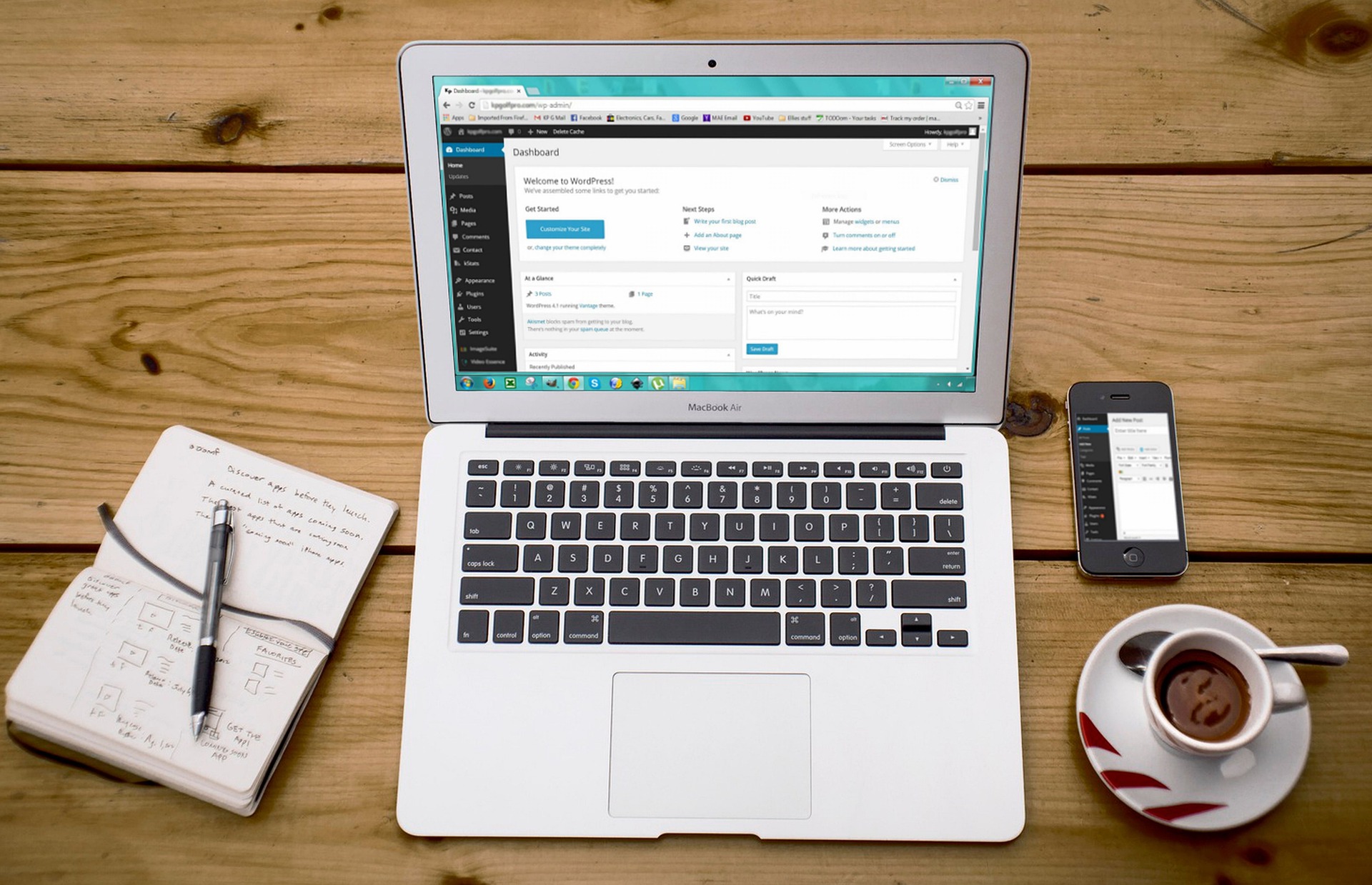 Creating your first website can be daunting. From not knowing where to start or even what needs to be included on a functionality and appearance perspective to the navigation and code. Plus, you also need to ensure your site is user-friendly.
Creating your first website can be daunting. From not knowing where to start or even what needs to be included on a functionality and appearance perspective to the navigation and code. Plus, you also need to ensure your site is user-friendly.
Web developers, designers and marketing teams need to work together to create a site that can be engaging to customers, encourage conversions and also be picked up by search engines. Damn! That’s a lot, right? It may be easier to talk to a web development agency in London.
If you are up for the challenge, then these 11 tips will outline the key things that need to be considered before creating your first website.
Table of Contents
1. Choosing a Domain and Host
Your domain name is the starting point of your website and can say so much in a few short words or phrases. Your domain name needs to be memorable, but it also needs to accurately reflect your brand whilst also being nearly impossible to spell wrong. Your brand name is crucial because it will be included in your domain name. This means incorporating Search Engine Optimisation (SEO), easy spelling and your brand into a domain name to increase the chance of search engines finding it. Basically, a business that can be accessed online easily will get more customers.
When looking at hosting packages, you need to take the nature of your website and your business into consideration. Will your website be media-heavy with images and videos? Do you have in-house technical support, or will you need reliable support from your provider? You also need to take the scalability of your business into consideration as well. Are you expecting to see high levels of traffic because you would then need a hosting package that can support this? Don’t forget about the security, backup options and additional features your site may require. Before making a final decision, be sure to take a look at reviews of the company on social media and third-party websites.
2. Clean Design
A crucial part of a website is the design. This needs to be clean and concise for your customers to help drive conversions. A high-quality website is one that is attractive to the eye, easy to read and has intuitive navigation. One of the most important things about a clear design is that it helps the viewer to focus on your offerings and brand without getting distracted by any complexity. Customers subconsciously relate website designs to the quality of a company or product. So, driving a positive user experience is vital and can be accomplished through a simplistic design.
3. Branding
Branding is a crucial part of any business, regardless of size or age. The design of your logo gives your customers an opinion of your business, and a professionally designed logo can excel in catching the eye of your customers and remain memorable in their minds. But it’s not just the design of your logo that matters; it’s also the placement on your website. Typically, websites include the logo in the top left-hand corner, as that’s where your customer’s eyes naturally fall when they begin to scan a website.
To solidify your branding, it’s recommended to use the same logo across all platforms, including social media profiles and product packaging. When you remain consistent in your branding, your customers build trust in your business, and it creates a memorable experience for them.
4. Functionality
When it comes to functionality, there are a lot of things that need to be considered. Obviously, you need to think about the website functionality in the literal sense; are there loading issues of links that are broken? Are the security features on your site what is needed for your business? Alongside your usual operational issues, you will also need to view your site’s additional features from the perspective of your users. Such as looking at your contact forms, feedback and surveys to ensure they are all working correctly. Any one of these issues could be the cause of a customer exiting your site.
Your website needs to be easy for your customers to understand. If your site is confusing or difficult to navigate, your customers are likely to leave and never come back if they can’t find what they want. To increase the efficiency of your site, you need to put yourself in your customer’s shoes and arrange the site the way you, as a customer, would expect to see it. This includes the navigation bar and the individual page layouts. Don’t forget to utilise your sitemap for your navigation and your SEO. You can also remove underperforming or unnecessary pages, which may help decrease your loading time.
6. Usability
The usability of a site is critical to your customers, and a site that is easy to use is more likely to promote customer interest and encourage conversions. Usability covers a lot of areas, such as displaying your product or service information in a clear way or ensuring your site has all the features your customers need for the site to be accessible. If your customer is looking over your products and considering a purchase but wants the look over your reviews, are they visible where they should be? Can your customers find your contact details? Key elements like this are essential to consider when creating your first website.
7. Call to Action
A call to action is crucial on any type of business website as it allows your customers to make a purchase, enquire or get in touch with you. Friendly calls to action like “Get In Touch” shows your business is open to developing a relationship with the customer. You need your call to actions to be relevant to the level of engagement your customers have with your company. If it’s their first time interacting with you, it may be easier to promote an email sign-up as a starting point for them to develop some knowledge of who you are and what you do. If they are already a loyal customer, you could entice them with a loyalty scheme. Regardless of what you are prompting your visitors to do, you need to include at least one call to action on every page of your site.
8. Short Loading Times
When you’re looking for information online, nothing is more annoying than slow loading times. Customers can be turned off of your website before they even reach a second page please of slow loading. Testing your website ahead of its launch can help you identify any issues and fix them before your website is live for the public. Most issues are caused by large image issues or media-heavy sites, or unused javascript being on pages it doesn’t need to be on. A great way to increase customer retention and provide a positive user experience is to provide them with a quick-loading website.
9. Mobile Sites
Statistically, online searches on mobile have been on the rise significantly over the last 2 years. Around 95% of mobile users rely on their mobile devices to search for local products and services. Being able to reach your customers on a mobile device is essential in 2022, which is why you need a mobile-friendly website. This can be done by choosing a responsive design that can adapt to the device it is being shown on. This will cover different laptop screen sizes, different mobile screen sizes and tablets as well.
10. Tracking
With search engine tracking tools like Google Analytics, Google Webmaster Tools and Bing Webmaster Tools, website developers have the tools necessary to track your return on investment. These tools are used to track engagement, monitor traffic and track conversion rates. Having tracking on your websites will allow you to discover the marketing campaigns that work best for your business and which aren’t performing at their best.
Because we are generous, here’s a little additional extra…
11. Original Content
One of the best things you can do for your website is to write high-quality, original content that is specifically relevant to your company and its products. You need to ensure that the keywords you are using are relevant to that page. Otherwise, you confuse your customers, and Google will not promote your website in search engines. To increase value, it’s recommended that you include a minimum of 150 words per page and include links to credible sources or other pages on your website. We would recommend using a third-party tool like Copyscape to review your writing to ensure it passes duplication standards. Using duplicate content on your website will result in penalties from Google.
So there you have it, our top 11 tips when creating your first website. There are many aspects to include, so take your time to do it right the first time. Once your site is launched, you can utilise some of the many online tools to help improve your site for search engines and also for your customer’s user experience.







